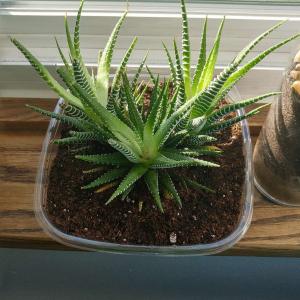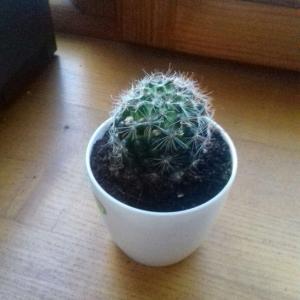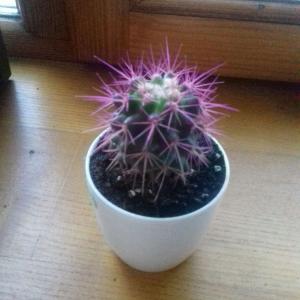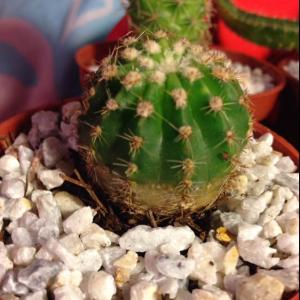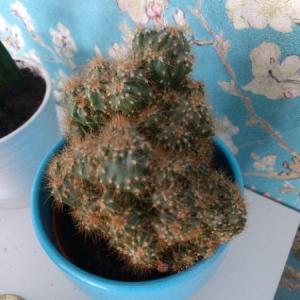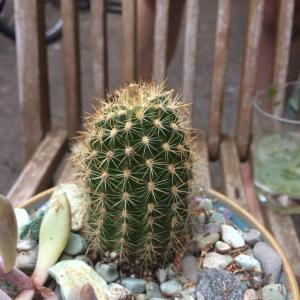文章
Hande Salcan
2017年05月22日

Learn how to grow prickly pear cactus in this article. Growing prickly pear cactus and its care is not difficult, if you grow it in right growing conditions.
USDA Zones— 9 – 11
Difficulty— Easy

Other Names— Barbary-fig Cactus, Cactus Pear Fruit, Gracemere-Pear, Indian-fig, Indian fig, Nopal Cactus, Oponce, Opuntia, Opuntia cardona, Opuntia ficus, Opuntia ficus-indica, Opuntia fuliginosa, Opuntia hyptiacantha, Opuntia lasciacantha, Opuntia macrocentra, Opuntia megacantha, Opuntia puberula, Opuntia streptacantha, Opuntia velutina, Opuntia violacea, Tuna Cardona, Westwood-Pear.
Also known as Indian fig, prickly pear is a common succulent plant in Mediterranean and subtropical regions. It is grown as an ornamental plant and for its juicy fruits. Prickly pear cactus is undemanding and easy to grow. It grows about 1 – 2.5 m high. The flowers are very showy, colors ranging from white, yellow, to orange, depending more on the variety.How to Grow Prickly Pear CactusPropagation
Prickly pear cactus can be propagated from seeds or pads. Growing prickly pear from the pad is comparatively easy than seeds. To facilitate the rooting, it is preferable to wait until the cuts are perfectly healed (about 1 – 2 week) before planting. Tuck them an inch deep on the ground or in containers. The rooting takes place in a short time, usually in a month. Save the rooting pad from afternoon sun and water it when top one inch of soil seems dry.
Location
Growing prickly pear cactus in a sunny location allows the plant to thrive and fruit. Prickly pear cactus is a tropical or subtropical plant, so it loves the warm exposure. However, it can withstand temperatures down to 14 F (-10 C), but in areas, with harsh winters it is best to plant it in a sheltered spot, near a wall or tall tree to protect it from cold drafts and fluctuation in temperature. If you’re living in a cooler climate, growing prickly pear cactus in a container is the better option for you as it can only be grown on the ground where winter temperature remains above 14 F (- 10 C).
Requirements for Growing Prickly Pear CactusSoil
Grow it in well-drained, sandy and loamy soil, avoid clay-rich soil that is not well draining and remains moist. For growing prickly pear cactus in a container use potting mix or 1/3 part each of compost, soil, and coarse sand or perlite.
Watering
Watering should be done only when the surface looks dry. On average, during the spring and summer, water it once or twice a week and during the fall and winter once or twice a month. If you’re living in tropics more frequent watering will be required.
Repotting
If growing in a pot, the plant must be repotted once it is root bound. Whenever you identify that the plant is growing slowly, repot it. The best repotting time is spring.
Prickly Pear Cactus Care
Prickly pear cactus care involves several steps that are given below.
Fertilizer
From spring to fall, fertilize every month with a liquid 5-10-10 fertilizer to promote flowering and fruiting. For the young plant, fertilize with 10-10-10 fertilizer. Do not feed in winter in cooler zones when plant stops to grow.
Pruning
Pruning is done in spring or late summer by removing the pads that come into contact with each other or those that are damaged or poorly formed.
Overwintering
Prickly pear cactus care in winter is essential. If you’re growing prickly pear cactus in a pot, protect it in winter by keeping it indoors. If growing outside, do mulching to insulate the plant from temperature drop.
Fruit thinning
Fruit thinning is done to get a better harvest. It is necessary to remove extra fruits and flowers to get lower production but of improved quality. It is recommended that thinning must be done two weeks before the formation of the fruits, leaving approximately up to 10 fruits per stalk.
Pests and Diseases
Mealybugs, spider mites, and cochineal might attack it. It is also attacked by fruit flies and moths.
Too much water or cold causes rotting. As soon as you detect the softening of tissues, remove the rotten part and treat the infected part with fungicide.
Harvesting
USDA Zones— 9 – 11
Difficulty— Easy

Other Names— Barbary-fig Cactus, Cactus Pear Fruit, Gracemere-Pear, Indian-fig, Indian fig, Nopal Cactus, Oponce, Opuntia, Opuntia cardona, Opuntia ficus, Opuntia ficus-indica, Opuntia fuliginosa, Opuntia hyptiacantha, Opuntia lasciacantha, Opuntia macrocentra, Opuntia megacantha, Opuntia puberula, Opuntia streptacantha, Opuntia velutina, Opuntia violacea, Tuna Cardona, Westwood-Pear.
Also known as Indian fig, prickly pear is a common succulent plant in Mediterranean and subtropical regions. It is grown as an ornamental plant and for its juicy fruits. Prickly pear cactus is undemanding and easy to grow. It grows about 1 – 2.5 m high. The flowers are very showy, colors ranging from white, yellow, to orange, depending more on the variety.How to Grow Prickly Pear CactusPropagation
Prickly pear cactus can be propagated from seeds or pads. Growing prickly pear from the pad is comparatively easy than seeds. To facilitate the rooting, it is preferable to wait until the cuts are perfectly healed (about 1 – 2 week) before planting. Tuck them an inch deep on the ground or in containers. The rooting takes place in a short time, usually in a month. Save the rooting pad from afternoon sun and water it when top one inch of soil seems dry.
Location
Growing prickly pear cactus in a sunny location allows the plant to thrive and fruit. Prickly pear cactus is a tropical or subtropical plant, so it loves the warm exposure. However, it can withstand temperatures down to 14 F (-10 C), but in areas, with harsh winters it is best to plant it in a sheltered spot, near a wall or tall tree to protect it from cold drafts and fluctuation in temperature. If you’re living in a cooler climate, growing prickly pear cactus in a container is the better option for you as it can only be grown on the ground where winter temperature remains above 14 F (- 10 C).
Requirements for Growing Prickly Pear CactusSoil
Grow it in well-drained, sandy and loamy soil, avoid clay-rich soil that is not well draining and remains moist. For growing prickly pear cactus in a container use potting mix or 1/3 part each of compost, soil, and coarse sand or perlite.
Watering
Watering should be done only when the surface looks dry. On average, during the spring and summer, water it once or twice a week and during the fall and winter once or twice a month. If you’re living in tropics more frequent watering will be required.
Repotting
If growing in a pot, the plant must be repotted once it is root bound. Whenever you identify that the plant is growing slowly, repot it. The best repotting time is spring.
Prickly Pear Cactus Care
Prickly pear cactus care involves several steps that are given below.
Fertilizer
From spring to fall, fertilize every month with a liquid 5-10-10 fertilizer to promote flowering and fruiting. For the young plant, fertilize with 10-10-10 fertilizer. Do not feed in winter in cooler zones when plant stops to grow.
Pruning
Pruning is done in spring or late summer by removing the pads that come into contact with each other or those that are damaged or poorly formed.
Overwintering
Prickly pear cactus care in winter is essential. If you’re growing prickly pear cactus in a pot, protect it in winter by keeping it indoors. If growing outside, do mulching to insulate the plant from temperature drop.
Fruit thinning
Fruit thinning is done to get a better harvest. It is necessary to remove extra fruits and flowers to get lower production but of improved quality. It is recommended that thinning must be done two weeks before the formation of the fruits, leaving approximately up to 10 fruits per stalk.
Pests and Diseases
Mealybugs, spider mites, and cochineal might attack it. It is also attacked by fruit flies and moths.
Too much water or cold causes rotting. As soon as you detect the softening of tissues, remove the rotten part and treat the infected part with fungicide.
Harvesting
0
0
求助
Ueca
2017年05月19日

What kind of cactus is the taller one? It's about 8cm tall.


0
0
Ueca:After researching I have found it to be called "Fairy Castles".
求助
Nicole-Bishop
2017年05月15日

what is this cactus called?

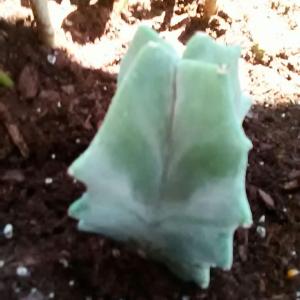


2
0
meriunkat:kinda looks like oscularia deltoides
meriunkat:I don't know but that is really cute cactus
求助
Aesthesiiick
2017年05月12日

does anyone know what this succulent / cactus is? leaves are thick and a bit felt like, and thorns are tiny and appear in bunches around the upper half of the plant. Plant is dark green in colour and apparently flowers form at the top in a circle. flowers are red supposedly #cactus #cactus #succulent #suncculents
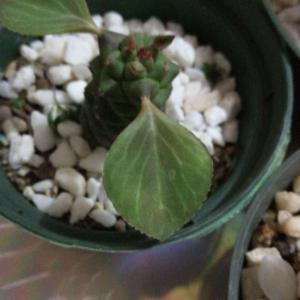

1
0
meriunkat:Monadenium Ritchiei ssp. Nymbayense
meriunkat:how interesting
Aesthesiiick:and another
Aesthesiiick:some more pictures
求助
deerod96
2017年05月02日

Hi does anyone know what type of cactus this is?? Any help is appreciated! (: #cactus #succulent
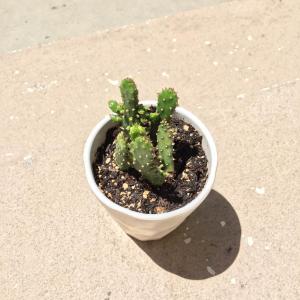

1
0
Cleaux:so cute!!
deerod96:Thank you!
Yan Tao:Probably an Opuntia species. Still to young to ID properly.
玛姬珂:Opuntia tuna, maybe .



